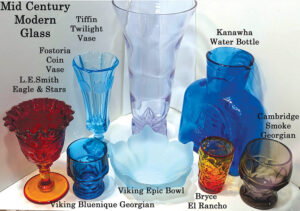 By Tom Cotter
By Tom CotterPhotos by Tom Cotter, including collections of Roberta Hankins
When I wrote an article about Mid-Century Modern Glass for the September 2020 Mountain States Collector, I feel that I scratched the surface. I’m still doing so three years later. The glass companies that continued into the late 20th and early 21st centuries scrambled to survive in an era of increasing costs and foreign competition. Since decorating and dining changed so much after World War II, the industry focused on colorful embellishment pieces to stay alive. Items were pour or blown molded. Some freehand work was done on a small scale. Most Mid-Century Modern glass companies went out of business by 1990. Blenko and some other enterprises are still going.
In order to capture the attention of buyers on a smaller scale, a lot of companies made figurines, such as glass animals. Two books on glass animals by Dick and Pat Spencer and Lee Garmon, provide insight. Some firms remade items from earlier eras, but often with new, different colors. For instance, L.E. Smith and others brought back some traditional Early American Pattern Glass (EAPG) pieces in a variety of hues not seen before. In the zoology area, Imperial made panthers, horses, elephants, ducks, gazelle, and mules in a variety of colors from Heisey molds. Viking’s long necked-egrets, ducks and geese, and long-tailed birds in colors are much in demand, but whales, crystal bookends/paperweights and other animals are more reasonable. Fenton made a plethora of animals in a plethora of colors; cats, rabbits, deer, bears, mice, and so on. Kanawha made a number of glass animals, including elephants, squirrels, ducks, rabbits, and swans, as did Pilgrim. Some of those animals are obviously molded, while others appear more free-formed. L.E. Smith made a flock of turkeys in crystal, amber, amethyst, ruby, and green carnival, and some lustre finishes, along with squirrels, birds, horses, and roosters. Indiana glass made a herd of covered elephants, as well as several votive candleholders like cats, turtles, and frogs. Companies around Cambridge, Ohio, that made many small figurines and novelties from purchased and new molds included Mosser Glass (still open), Degenharts’ Crystal Art Glass (molds later sold Bernard Boyd, becoming Boyd Crystal Art Glass), and Guernsey Glass. Summit Art Glass also bought molds from Cambridge, Imperial, Westmoreland, and St. Clair, making many novelties in a wide variety of colors. One of their novelties was a reproduction of the Frederick Remington Buffalo Hunt Bowl from a Cambridge mold. In the area of produce (okay, not animals), several companies made glass vegetables, fruits, and fungi. Viking made flowers and various fruits, as well as the now very popular mushrooms, all in vibrant colors. Bischoff, Pilgrim, and Rainbow all created pieces, some similar to Blenko items, as well as creations and colors that varied. Pilgrim featured sand carved cameo items signed by artist Kelsey Murphy.
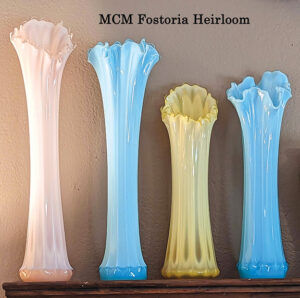 Fenton Glass flourished in the MCM years with their Horizon line in cranberry, lime, amber, and blue in many, many shapes. Among Fenton’s products were bells in a wide variety of shapes and decorations, still quite popular among collectors. Fenton Hobnail is in demand, as French, Green, and Cranberry opalescent in the beginning were followed by Amethyst, Blue, Cameo, Plum, and Topaz. The Crest line pieces have different color rims from the base glass. Painted decorations enliven many Fenton pieces. Fenton also created pieces from the Indiana Tumbler and Goblet catalog, primarily Cactus shapes, in Canary (vaseline), Chocolate, Colonial Blue, Amber, Pink, Custard, Teal Green and Willow Green Opalescent, Spruce Green, Dusty Rose, Red Sunset Carnival, and Rosalene. More EAPG redefined. Whether vases or flower frogs, Mid-Century Modern flower holders have a great demand. Particularly popular are swing/swung vases made by many companies. L.E. Smith, Viking, Westmoreland, Fostoria, and others used traditional molds as a start to create vases up to five feet tall in vibrant colors like Peacock, Persimmon, and the hugely popular Smith Bittersweet and Lilac. Research is critical. Viking made translucent Persimmon; Smith made opaque Bittersweet. Besides vases, Fostoria Heirloom came in bowls, plates, candleholders, and other pieces in gentle pastels and lastily in ruby. Tiffin didn’t swing their glass, but made amazing colors in the Empress and Modern lines. In addition to vases, Viking made flower holders with frogs. These came in a variety of shapes, from simple globe bowls to elongated candle bowls. And all the colors you could imagine.
Fenton Glass flourished in the MCM years with their Horizon line in cranberry, lime, amber, and blue in many, many shapes. Among Fenton’s products were bells in a wide variety of shapes and decorations, still quite popular among collectors. Fenton Hobnail is in demand, as French, Green, and Cranberry opalescent in the beginning were followed by Amethyst, Blue, Cameo, Plum, and Topaz. The Crest line pieces have different color rims from the base glass. Painted decorations enliven many Fenton pieces. Fenton also created pieces from the Indiana Tumbler and Goblet catalog, primarily Cactus shapes, in Canary (vaseline), Chocolate, Colonial Blue, Amber, Pink, Custard, Teal Green and Willow Green Opalescent, Spruce Green, Dusty Rose, Red Sunset Carnival, and Rosalene. More EAPG redefined. Whether vases or flower frogs, Mid-Century Modern flower holders have a great demand. Particularly popular are swing/swung vases made by many companies. L.E. Smith, Viking, Westmoreland, Fostoria, and others used traditional molds as a start to create vases up to five feet tall in vibrant colors like Peacock, Persimmon, and the hugely popular Smith Bittersweet and Lilac. Research is critical. Viking made translucent Persimmon; Smith made opaque Bittersweet. Besides vases, Fostoria Heirloom came in bowls, plates, candleholders, and other pieces in gentle pastels and lastily in ruby. Tiffin didn’t swing their glass, but made amazing colors in the Empress and Modern lines. In addition to vases, Viking made flower holders with frogs. These came in a variety of shapes, from simple globe bowls to elongated candle bowls. And all the colors you could imagine.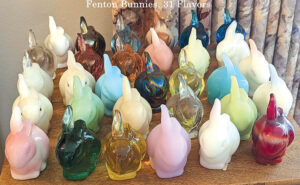 Although dinner plates and much stemware were no longer made as extensively, tumblers became a big seller as casual dining replaced formal dinners. For the hexagonal or diamond patterned Georgian line in 1950, Paden City was out of business, Cambridge finished with Smoke in 1954, and Fenton completed their Georgians in the early 1950s. Viking and some Anchor Hocking continued, with Mosser leaping into the competition late, marketing through The Vermont Country Store and looking essentially identical to Cambridge Georgians. Another popular style was textured tumblers, stems, and pitchers, including Anchor Hocking Milano, Bryce El Rancho, Morgantown Crinkle, and Seneca Driftwood Casual. While many colors were pastels, there were also vibrant reds, deep blues, smoke, rich amethyst, forest green, and even black. Oh, and there was also the red-tinged Bryce El Rancho Flame.
Although dinner plates and much stemware were no longer made as extensively, tumblers became a big seller as casual dining replaced formal dinners. For the hexagonal or diamond patterned Georgian line in 1950, Paden City was out of business, Cambridge finished with Smoke in 1954, and Fenton completed their Georgians in the early 1950s. Viking and some Anchor Hocking continued, with Mosser leaping into the competition late, marketing through The Vermont Country Store and looking essentially identical to Cambridge Georgians. Another popular style was textured tumblers, stems, and pitchers, including Anchor Hocking Milano, Bryce El Rancho, Morgantown Crinkle, and Seneca Driftwood Casual. While many colors were pastels, there were also vibrant reds, deep blues, smoke, rich amethyst, forest green, and even black. Oh, and there was also the red-tinged Bryce El Rancho Flame. I wish to thank Roberta Hankins for sharing a picture of her Fenton rabbits and Fostoria Heirloom vases. Peggy and Jon DeStefano provide a vital forum for us through the Mountain States Collector. It’s great to be writing an article to be published in the Mountain States Collector just prior to the Front Range Glass Show on September 30 and October 1, 2023, sponsored by Jodi and Mark Uthe at the Loveland Ranch Event Center Complex McKee Building. I can assure you that many of the items I have described will be for sale there. The Rocky Mountain Vintage Glass and Pottery Club (also known as the Rocky Mountain Depression Glass Society) always is at the Front Range Glass Show. Books that might be fun are the aforementioned Glass Animals in two editions by the Spencers. Enjoy your collecting, whatever your choice.






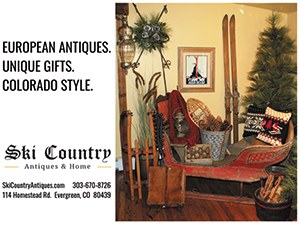
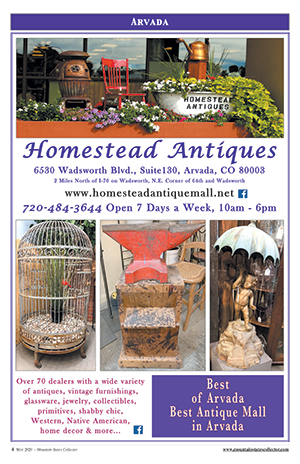





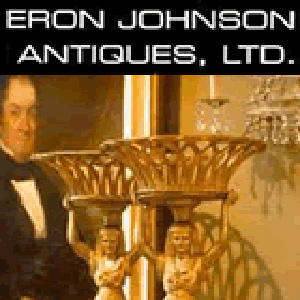

Follow Us